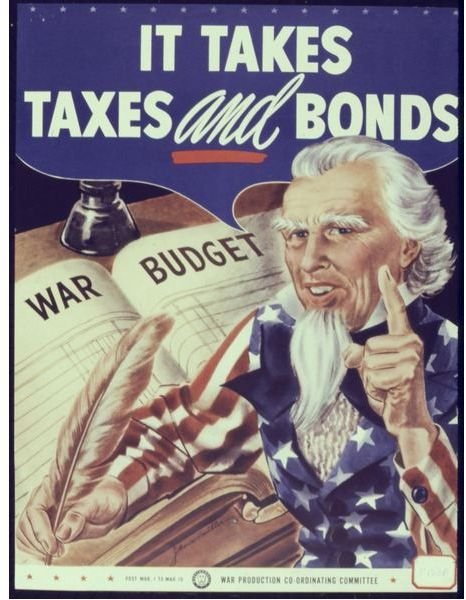Lost on All the New Tax Plans Being Proposed? Find Out Here What They All Mean?
Why an Alternative Tax Code?
Whether or not you like the current tax code, are you wondering why it needs to be changed? After all, the full effects of the healthcare reform act (Obamacare Care) are yet to be seen, but the early indicators are the so-called fix makes healthcare more expensive, more difficult to obtain, and could even result in individuals receiving diminished quality of care or losing their benefits entirely.
That begs the question, “Would reforming the tax code be helpful or harmful to American taxpayers?”
The tax code needs to be changed because it is oppressive and cripples the American economy in various ways such as forcing American businesses to relocate their businesses (and jobs) to other parts of the world or restrict their domestic expansion or creation of new jobs. In the words of one presidential hopeful, Herman Cain, “Our tax code is the 21st century version of slavery. The IRS has become the overseer of the American people.” 1
Here’s a look at the alternative tax plans that are currently on the table with a comparison of some of their key elements and differences. Find out what is being proposed and how it could harm or help you and your family.
Fair Tax
What is the Fair Tax and why are so many people eager to see it replace the convoluted, complex and onerous American tax code? In the words of Americans for Fair Taxation: “Under the Fair Tax, what you earn is what you keep. No more withholding taxes; no more income tax.”
The FairTax replaces the taxes listed below with a simple to understand, single rate national sales tax levied on the consumption of new (not used) products and services for one’s personal use:
- Federal income
- Personal income
- Corporate
- Gift
- Estate
- Capital gains
- Alternative minimum
- Social Security
- Medicare
- Self-employment
How does this affect the American taxpayer?
Think how nice it would be to never again dread April 15 or scurry around to secure an extension for filing your taxes. Instead of agonizing over the difference between your gross and net pay figures on your pay stub, you enjoy deciding how to spend, save or invest the money you’ve worked so hard for. Unpleasant scenarios like undergoing audits or paying penalties are gone forever because under the Fair Tax plan, no one ever has to file an income tax return.
If you choose to buy your clothing or other goods from a local thrift store rather than a brick and mortar store or you opt for used vehicle instead of a new one, you pay no sales tax.
In addition, the new products you purchase do not contain any hidden taxes such as corporate taxes or additional compliance costs that the manufacturer is passing on to you, the consumer. There are no hidden costs because businesses do not pay taxes on goods and services they purchase to produce their products or services. However, taxes paid on these new consumed goods and services generate the revenue stream for the government entities.
999 Plan for Economic Growth

The beauty of Herman Cain’s plan for economic growth, or 999, is its simplicity. There is no legalese or complicated calculations involved. If you own a business, you pay a nine percent tax on your corporate profits. If you are an American taxpayer, you pay a single, nine percent rate on your income. Everyone pays a nine percent national sales tax.
Cain’s plan is a two-prong approach that begins with the immediate implementation of the 999 plan. The end goal is implementation of the Fair Tax, which is summarized above. The wisdom of this two-step approach is it provides a gradual transition to a plan—the Fair Tax— that ultimately replaces an oppressive tax code with one that is designed to promote prosperity and economic growth without throwing the country into an economic turmoil.
Cain’s take on his plan? “If 10% is good enough for God, then 9% should be just fine for the Federal Government.” 2
How does 999 benefit the taxpayer?
The plan is equitable: everyone pays income taxes but no payroll taxes. It reduces or eliminates any incentive to avoid or to refuse paying taxes. It lowers the tax rate and increases employment opportunities and prosperity.
Flat Tax…Which One Is That, Really?
Before you can discuss the “flat tax plan,” you have to do some sorting out. In fact, there are so many versions of a “flat tax” bill that a taxpayer might feel like shouting: “Will the real flat tax plan please stand up?” For instance, is it the Flat Tax Act of 2009, S.741.IS, or the Freedom Flat Tax Act, HR.1040?
For our purposes here, we’ll cover the principles that are the foundation of most of the current flat tax proposals:
- The taxes are levied on personal and corporate income.
- Whether the designated rate is 2 percent, 20 percent or some other number, one flat rate is imposed on all taxpayers.
- Deductions, credits, exemptions—sometimes referred to as loopholes—are eliminated. However, there is a household deduction for families.
- Double taxation, asset taxation, over or under taxation, and wealth taxation are eliminated.
- Income earned within the United States is taxed; income earned outside the territorial borders of the US is not.
How does this help the taxpayer?
According to the Heritage Foundation, filing taxes under a flat tax system is “…so simple that a third-grader could file a family’s tax return in about five minutes.” 3 Is anyone brave enough to dare try that with our current tax system? On the other hand, how sweet would it be not to fork out hundreds of dollars every year to your local tax preparer? Just think, you could afford to give your junior tax preparer a special treat, outing or party or stash the money away for his or her future education.
A flat tax system creates jobs, wealth and economic growth in a way no stimulus bill could ever touch. It ends class envy and class warfare because everyone pays the same flat rate and plays by the same rules. No more sweetheart deals or backroom bargains with special interest groups and political darlings.
Commonalities and Differences in the Three Plans
Before we look at these plans, it is important to note both the Fair Tax and the Flat Tax are bills in the legislative process. The 9-9-9 plan is a proposal by presidential candidate, Herman Cain. Cain’s idea is to implement the 9-9-9 plan as a specific, credible plan that creates a great first step toward reforming the current tax system and ushering in the implementation of the Fair Tax.
Richard Michael, a common law tax advocate, who collaborated with us to delineate the similarities and differences in the various alternative tax plans such as Cain’s 999 plan explained this distinction to us in his interview.
Flat Tax versus Fair Tax
The two plans are alike in that both are flat rate taxes based on consumption. They both are revenue/price neutral when it comes to investments and savings. Both are tax replacement bills rather than tax reform bills. Deductions are eliminated to reduce the complexity of the tax code.
Let’s look a few ways these two differ:
- The Flat Tax would keep the IRS as the administrative oversight of the program, while the Fair Tax would abolish it.
- The Flat Tax contains hidden corporate and compliance taxes whereas the Fair Tax is transparent and free of any additional, undisclosed taxes or fees.
- The Flat Tax would retain the income tax system; the Fair Tax would abolish it.
- The Flat Tax retains payroll taxes and income tax withholding; the Fair Tax eliminates these.
- The Flat Tax would have more than one tax rate because it retains the income tax system; the Fair Tax has one tax rate.
What about the 999 Economic Plan?
It is a little tricky to compare the 999 Economic Plan to these two since the second phase of 999 is the implementation of the Fair Tax. A major component of the Fair Tax is eliminating the income tax; the 999 plan retains it but it is taxed at a single, flat rate. Given that, here we look at a few key elements of the first phase of the 999 plan, which is simple and straightforward.
- It’s similar to the Flat Tax plan because there is one rate: nine percent. This single rate applies to corporate, personal and a national sales tax.
- It’s comparable to the other two in that it replaces specified taxes with a flat rate tax. However, the 999 plan does retain the income tax, whereas the Fair Tax would eliminate it.
- The role of the IRS is impacted because of the lower 9 percent flat tax rate.
What does all this mean to the American taxpayer?
Regardless of which plan you favor, there are some areas of common agreement among most individuals. Number one, the tax code is flawed and onerous and needs reform or replacement. Number two, no matter which plan is implemented either in its entirety or in a modified version, the result is economic growth, job creation, an explosive infusion of cash into the marketplace, and a better quality of life for the American taxpayer. The economy ignites and our country thrives. The parasitic nature of government is eliminated and control reverts to—we, the people—as was intended by our founding fathers.
What Are You Thinking?
A change, or even a proposed change, in the American system of taxation is a controversial subject at best. Whether you are an American taxpayer or not, we want to hear your views and opinions on the tax alternative plans we discussed here. Please use the comment section to send us a message.
References
- Mitchell, Daniel, Ph.D., “A Brief Guide to the Flat Tax,” The Heritage Foundation, http://www.heritage.org/Research/Reports/2005/07/A-Brief-Guide-to-the-Flat-Tax
- Image: Herman Cain by Attribution: Gage Skidmore under CC-BY-SA-3.0
- Video, “9-9-9 - A Vision for Economic Growth,” Friends of Herman Cain, http://teamcain.hermancain.com/an/mediaCollection?id=82d6a142-7f01-4c84-b149-a1440ddc8846
- http://www.fairtax.org/PDF/FairTaxFAQ.pdf
- Image: It takes taxes and bonds by unknown under public domain
- Herman Cain’s 999 Plan, http://www.hermancain.com/999plan
- Skype interview, October 10, 2011 with Richard Michael, http://www.grassrootsphonebank.com/DOM/?T=1010-haro&WVC=
